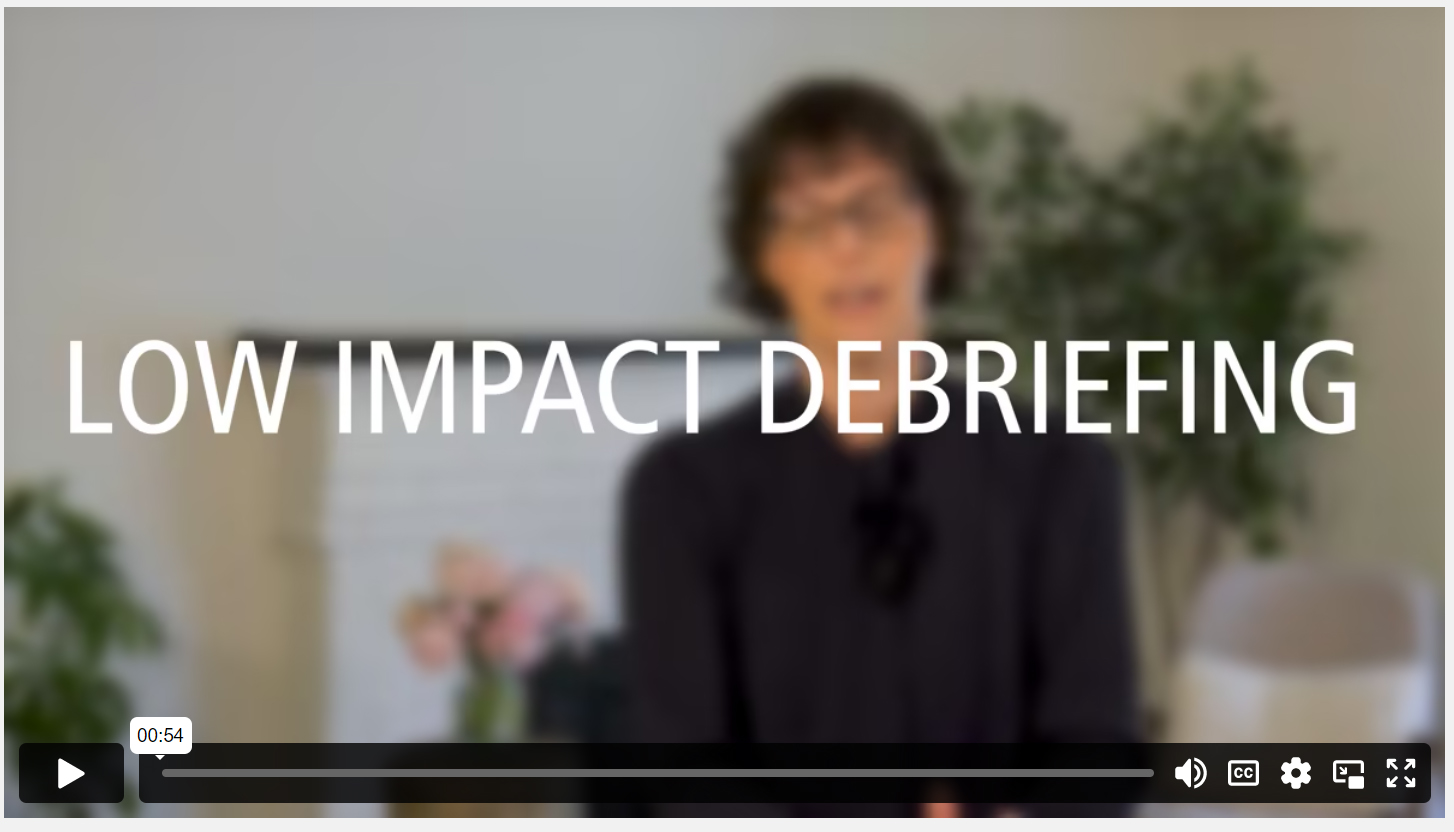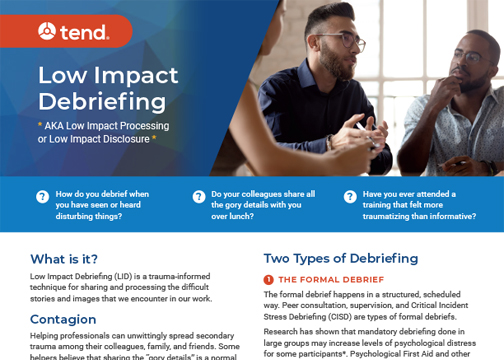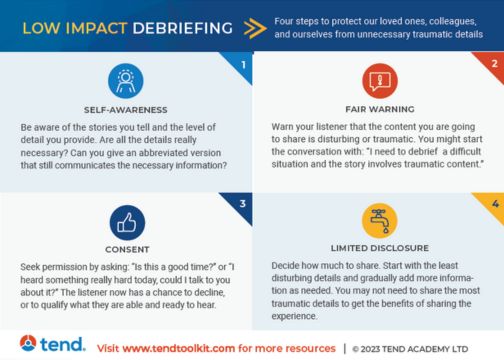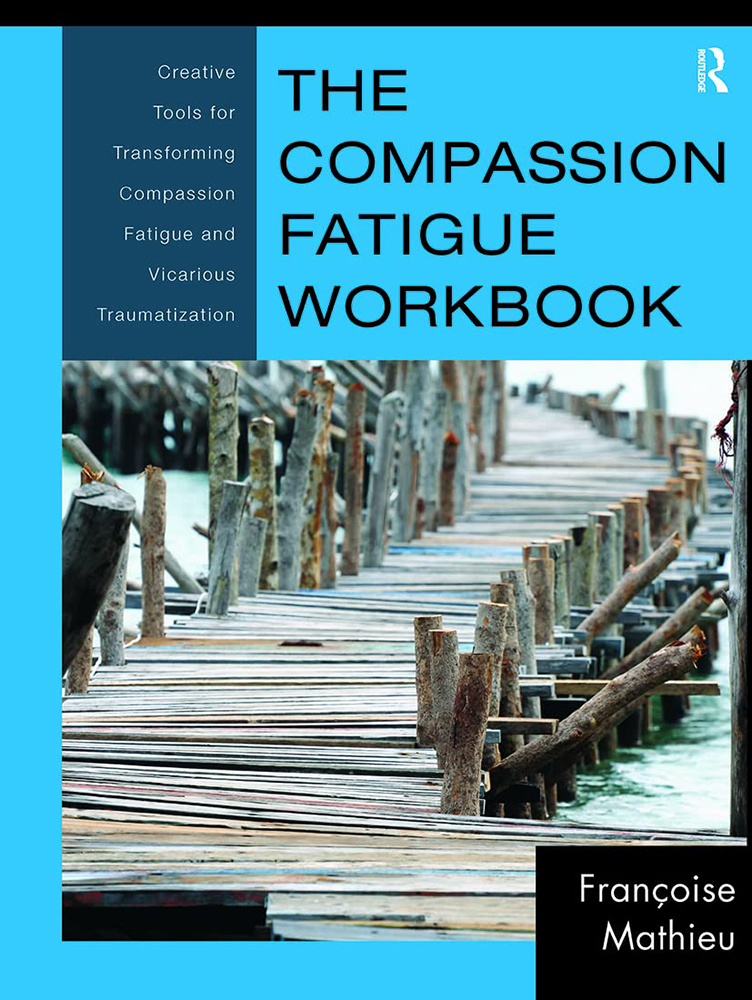Low Impact Debriefing
Four Steps to Safely Share and Process Difficult Experiences
Low Impact Debriefing

How do you debrief when you have heard or seen hard or disturbing things?

Do your colleagues share all the gory details with you over lunch?

Have you ever attended a training that felt more traumatizing than informative?

Video Resources
In this 7-part video series, Françoise Mathieu walks through the four steps of Low Impact Debriefing and outlines best practices for using this strategy with teams.
What is Low Impact Debriefing?
Low Impact Debriefing is a practice that helps us to share and process the trauma that we encounter as helping professionals – and to do so safely and respectfully. This simple and easy strategy can reduce contagion, prevent sliming, and protect our loved ones, colleagues, and ourselves from unnecessary trauma exposure.
It helps to prevent contagion
Helping professionals can unwittingly spread secondary trauma among their colleagues, family, and friends. Some helpers believe that sharing the “gory details” is a normal part of their work. And others may be so desensitized to trauma work that they forget that ordinary citizens may be horrified or shocked by our stories. These reactions are normal and common.
An important part of LID is to stop the contagion effect. We can do this by removing unnecessary details of traumatic events. This reduces the cumulative exposure to traumatic information while ensuring that we can safely reach out to others.
It prevents “sliming”
After a hard day, it is normal to want to talk to someone to help alleviate the burden of what you have experienced. However, if not done properly, this can leave the person on the receiving end feeling as though they now carry the weight of this traumatic information too.
The term “sliming” describes the feeling of receiving or witnessing unnecessary traumatic content without warning or permission. Sliming can be contagious.
Two Types of Debriefing
The Formal Debrief
The formal debrief happens in a structured, scheduled way. Peer consultation, supervision, and Critical Incident Stress Management (CISM) are types of formal debriefs.
Research has shown that mandatory debriefing done in large groups may increase levels of psychological distress for some participants. Psychological First Aid, Critical Incident First Aid, and other approaches can be used to help build communities of practice for safe, formal debriefing.
The Informal Debrief
The informal debrief happens in a casual, ad hoc way such as spontaneous conversations that happen in a colleague’s office or during the drive home.
Helpers who have been exposed to traumatic events need to debrief right away and cannot wait for a scheduled supervision meeting. Informal debriefs can be harmful when the listener feels as though they have been “slimed,” rather than participating in a safe debriefing process.
The Four Steps of Low Impact Debriefing

SELF-AWARENESS
Be aware of the stories you tell and the level of detail you provide.
Are all the details really necessary? Can you give an abbreviated version that still communicates the necessary information?

FAIR WARNING
Warn your listener that the content you are going to share is disturbing or traumatic.
You might start the conversation with: “I need to debrief a difficult situation and the story involves traumatic content.”

CONSENT
Seek permission by asking: “Is this a good time?” or “I heard something really hard today, could I talk to you about it?”
The listener now has a chance to decline, or to qualify what they are able and ready to hear.

LIMITED DISCLOSURE
Decide how much to share. Start with the least disturbing details and gradually add more information as needed.
You may not need to share the most traumatic details to get the benefits of sharing the experience.






